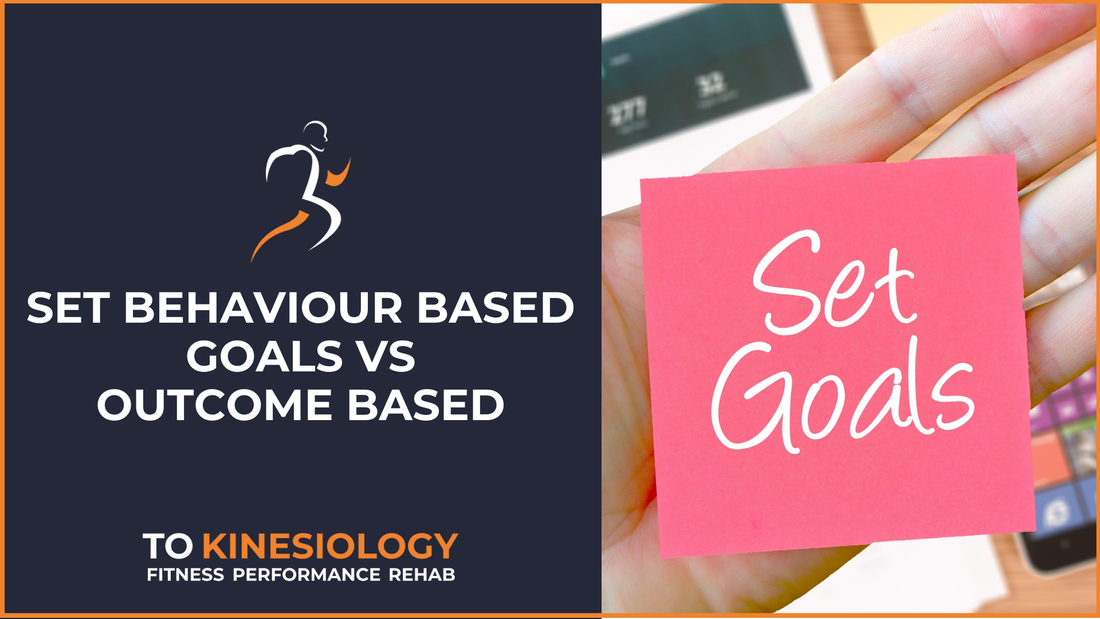|
Written by: Nem When people embark on a health and fitness journey, they usually set goals such as being healthier, more fit, losing weight, toning, gaining muscle and strength, having more energy, etc. These are called outcome-based goals. Meaning, these goals tell us where we want to be. However, they don't give us any information how we are going to get there. For that purpose, we need to set behavior-based goals. If our goal is to lose weight for example (outcome-based goal), we need to know exactly what actions we need to take every day (behavior-based goal) to achieve the goal of losing weight. How often do we need to exercise? What exercises should we be doing? What will our nutrition look like? Is there anything else we need to do to achieve this goal? Should we also incorporate daily movement? What about sleep, stress management, hydration? Once you figure out your outcome-based goal (ideally using the "SMARTER" approach), figure out habit-based goals that will get you moving toward your goal. It's important to be realistic and not set drastic goals that you won't be able to sustain. So start with habit-based goals you know you can sustain at the moment and then over time add more. You can also track how consistent you are with your habit-based goals. For example, let's say your goal is to eat one portion of vegetables and protein each meal. If you eat three meals a day, that is 21 meals/week. Track how many of those 21 meals in a week you were able to meet your habit-based goal of having one portion of vegeatbles and protein. It's usually not realistic or sustainable to be perfect 100% of the time. You can argue it's actually desirable to have some flexibility to have balance in life so you are more likely to sustain these habit-based goals over the long term. We teach our clients 80/20 rule. Meaning, if you stay on track 80% of the time and allow yourself to indulge in less healthy food for the remaining 20 percent of your meals, you can still reach your goals. A similar rule can be applied to exercise and other health and fitness goals. As you track these habit-based goals, ideally you are also assessing your outcome-based goals. If you are not seeing a change in the desired direction with outcome-based goals, this means you need to reassess behavior-based goals to see where you can improve. This might mean being more consistent with reaching behavior-based goals or making them more impactful for the outcome-based goal you are trying to reach. For example, if your goal is to lose weight and you've been eating 2000 calories every day, but not seeing any change in your weight, this means you need to reduce calorie intake. Set your behavior-based goal to 1800 calories and then in a few weeks assess weight change to see if this behavior-based goal produces the desired result and whether you were able to sustain this goal.
|
- Home
- About
-
Pricing/Services
- FITNESS STUDIO/CLINIC PERSONAL TRAINING
- Mobile & In-home Kinesiology & Personal Training
- Reformer pilates in Toronto
- Physiotherapy
- Online Personal Training and Kinesiology >
- 3D Body Mapping
- InBody Test
- Ultrasound Body Composition Assessment
- Metabolism test - Toronto
- V02 Max and Metabolism testing - Toronto
- Medical Fitness Testing
- Spirometry (lung function)
- Rent gym in Toronto
- Fitness classes
- Corporate wellness and fitness in Toronto
- Client Reviews
- Blog
- Members
- Contact
AboutProfessional personal training by kinesiologists in Toronto specializing in joint/muscle issues and medical conditions. We'll help you reach your health and fitness goals while managing your condition to move, feel and perform at your best. Private studio, in-home/mobile and online coaching options available. Aside from quality and reliable service from trusted health professionals, working with kinesiologists in Ontario means you might be eligible for a full or partial refund on our services.
|
|
@2024 TO KINESIOLOGY INC. ALL RIGHTS RESERVED
115 WOLSELEY STREET, M6J 1K1, TORONTO, ON
115 WOLSELEY STREET, M6J 1K1, TORONTO, ON

